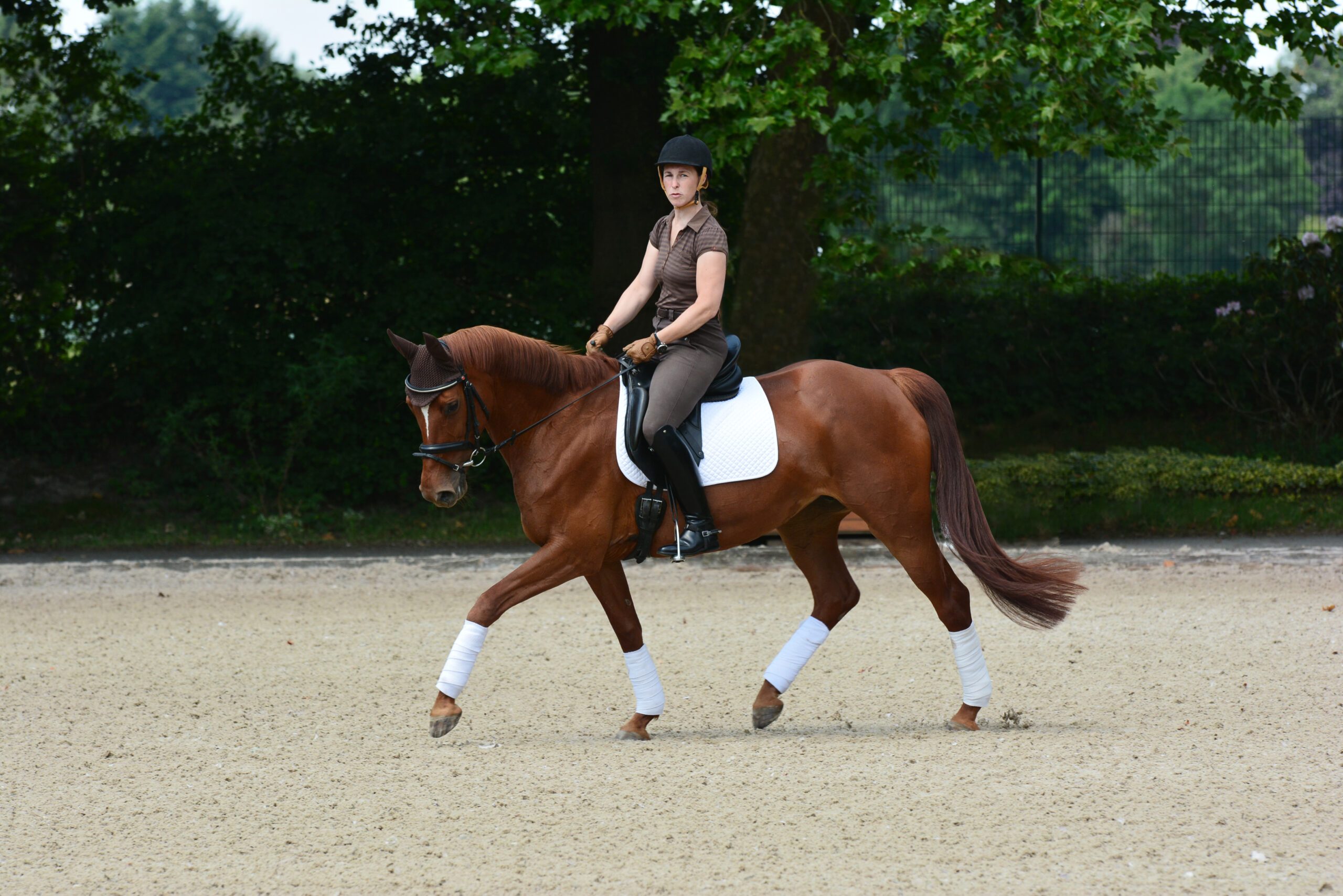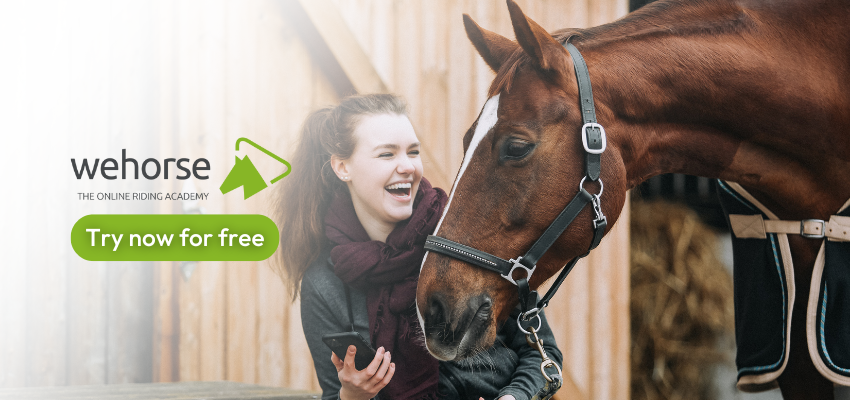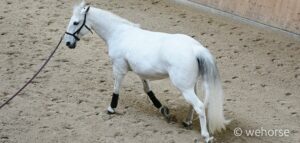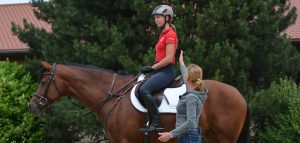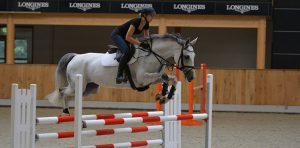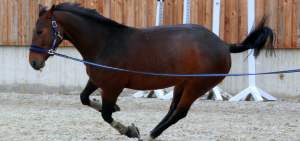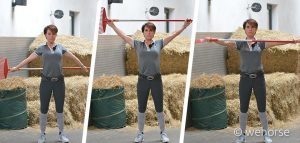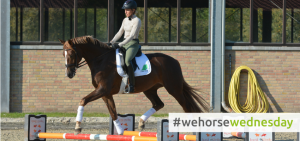The basis for all riding: without flexion there is no bend, and without bending there is no straightening and gymnastics. So it’s important to learn how to work them out correctly!
Regardless of the discipline, you need a correct flexion and bend for any good riding. In dressage, a large part of the lessons is based on this. When jumping, smooth and tight turns would not be possible and you could not straighten your horse without bending, i.e. working against its natural crookedness.
Table of Contents
- Flexion vs. bend – why the differences matter
- What is flexion?
- What happens if you ask your horse too much?
- Help for correct flexion
- What is bend?
- What happens if you want to bend your horse too much?
- Aids for correct bending
- The most important information for quick reading
Flexion vs. bend – why the differences matter
Arguably the most important difference is biomechanical. While the flexion takes place by giving way in the area of the poll or the first three cervical vertebrae, the bend influences the mobility of the entire horse’s body.
To describe it in simple words: In the flexion, the horse’s head is turned slightly in one direction in such a way that the rider can just see the eye and the nostrils shimmering on the respective side. With the bend, on the other hand, the horse is bent along its longitudinal axis with the whole body around the rider’s inner thigh – roughly comparable to a crescent moon.
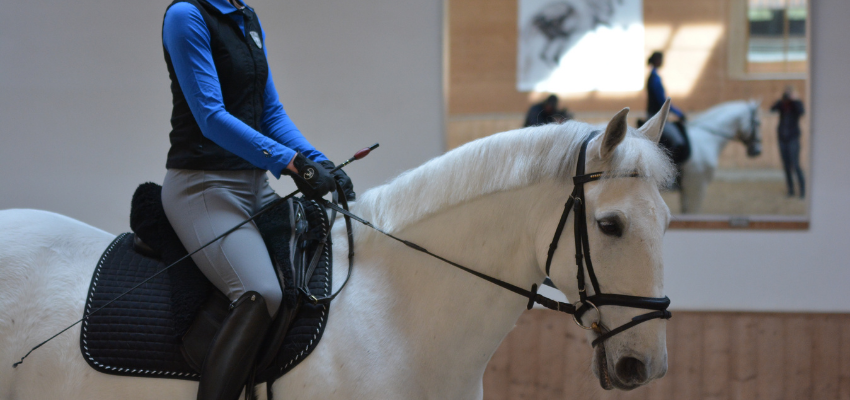
What is flexion?
Flexion means that the horse turns its head sideways at the poll. Contrary to what is often observed, the horse’s neck is only slightly bent when it is in the correct position. For the rider, the correct position of his horse can be recognized by the fact that he can just see the inner eye and the inner edge of the nostrils of his horse. If the rider sees more than that, his horse is definitely too bent.
Riding in flexion helps improve the horse’s compliance with inner aids and approach to outer aids.
What happens if you ask your horse too much?
If the rider brings their horse further than to the point where they see the horse’s inner eye shimmering slightly, various problems arise. For example, excessive flexion can cause the horse to swerve over the outside shoulder. At this point, it becomes more difficult for the rider to hold the desired line, especially on curved lines. Furthermore, timing errors can occur due to too much flexion.
Too much flexion is usually caused by the rider trying to work out the position of their horse by holding or even pulling on the inside rein. The result is a horse with a contracted neck whose inside hind leg cannot step forward or under the center of gravity.
Help for correct flexion
- The rider twists the inside wrist slightly, asking the horse to yield at the poll
- If the horse reacts to the signal and begins to give, the rider’s inner hand softens
- Important: Giving doesn’t mean throwing away the reins! A very fine yielding in the direction of the horse’s mouth, possibly only with the little finger, is sufficient so that the connection is maintained.
- If the horse doesn’t react, the rider waits and gives the signal again without interrupting the connection – even if the horse moves to the side. Only when it chews and gives in does the rider give in as a reward
- Always remember: A correct position is minimal. The eyes and nostrils should just be visible, otherwise, the adjustment is already too strong.
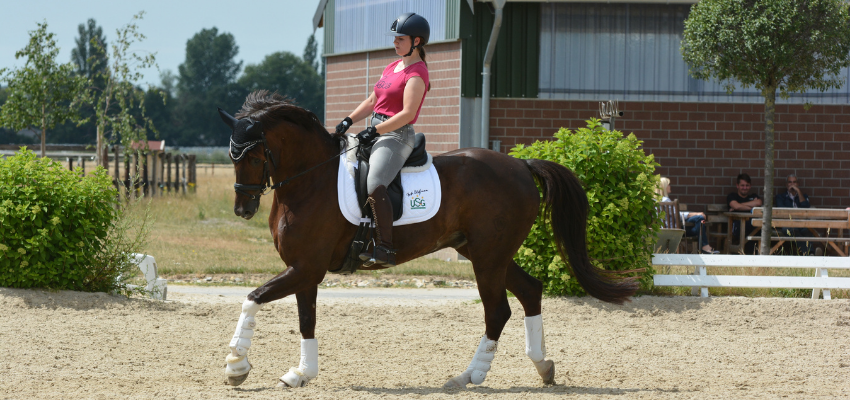
What is bend?
The bend of the horse denotes the curvature of the longitudinal axis of the horse. If you look at a horse from above – or imagine a horse from above – the horse should be bent along its entire length. A 100% even bend is not anatomically possible, since the individual vertebrae of the neck and back can move differently. While the horse’s neck is extremely flexible, the mobility of the thoracic vertebrae is restricted by the costal arches and the sacrum is completely rigid due to ossification.
Since the aim is to bend the horse evenly, the rider must not focus on the possible positioning of the neck for the optimal degree of bending but must pay particular attention to the mobility of the horse’s thoracic and dorsal vertebrae.
What happens if you bend your horse too much?
One might think that more flexion means more suppleness in the horse. However, this isn’t true. When a horse bends excessively, it builds up tension and develops resistance to the rider.
The attempt of many riders to bend their horse ends in a horse that is clearly out of control. In this way, the rider makes it anatomically impossible for his horse to bend lengthwise. Additionally, in many cases, excessive bending causes the horse to avoid the rider’s inner thigh rather than respond to it.
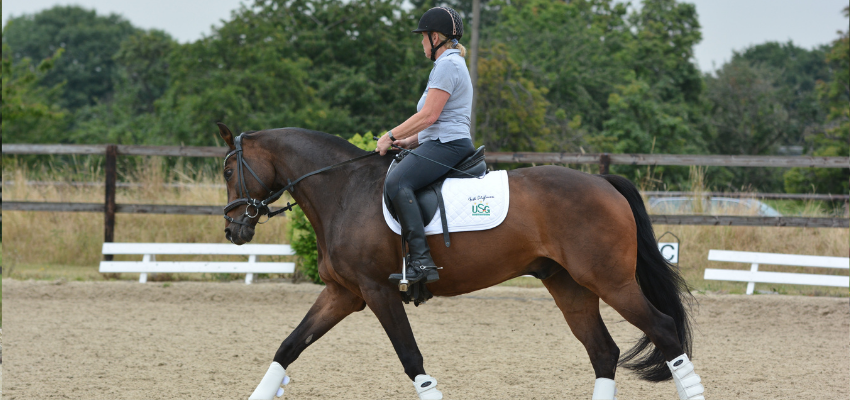
Aids for correct bending
- The inner leg is floating on the girth
- The flexion is created with the inside rein
- The outside rein allows the flexion and has a limiting effect on the horse’s outside shoulder
- The outer leg lies just behind the girth and prevents the hindquarters from swerving, if necessary
- Important: Do not push with your body! Your shoulders should be parallel to your horse’s shoulders as you turn.
Find more about the correct use of aids in riding here.
The most important information for quick reading
- In the trot, on curved lines such as a circle or in a turn, the following applies: the inner eye sees the shimmer, and the horse should be flexed and bent.
- Straight ahead at the trot: The horse should be in a straight line. When the rider comes out of a corner, he straightens the horse with the inside thigh and outside rein. A very slight flexion in the poll is okay.
- When cantering left, the horse is to the left, when cantering to the right, to the right.
- When galloping, make sure the horse is straight. It should stay on one track.
For more engaging exercises and comprehensive tips for correct flexion and bend, check out our website.

